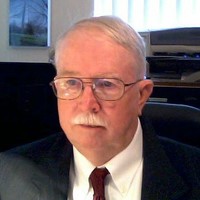
By Roger Risinger
Project engineers need a tool that would allows them to accurately forecast the time required to complete the project, as well as forecasting the impact of any changes that occur during project execution. However, for a project scheduler to be able to accomplish this goal, they must have a detailed understanding of all the detailed processes included within the project. In other words, a successful scheduler must be more than just a clerk typing numbers into a computer, i.e. they must understand the “Project Process.”
The Project Process
Requirements. A good example is a schedule for a hardware or equipment development project. The need for overall project is usually documented in a Technical Specification and the financial and timeline aspects are documented in a Statement of Work (SOW).
Allocation. To accomplish all the detailed requirements within the SOW and Specification(s), the project manager and the scheduler must allocate the various tasks to the identified design resources for the project.
Detailed Design. Once the allocation is done the scheduler then works with each of the design resources to identify all the detailed tasks for each technical area. In addition, there will be work products generated, such as part drawings, bills of material, assembly drawings, unit test procedures, integration test procedures, and sell off procedures.
Procurement. Next the scheduler works with the Supply Chain/Procurement organization to create the procurement order placement, supplier actions, supplier shipping, and incoming inspect tasks for the project.
Assembly. The scheduler subsequently works with the Production Testing and Assembly organization to identify all the integration and assembly tasks once all required parts and assemblies are on-hand.
Integration Test & Sell-Off. Finally, the scheduler works with the Testing and Quality organizations to identify all of the tests necessary to sell off the product.
Each of the sections above represents a process step in the creation of a project schedule, and in the execution of the project.
Summary
Many people try to use Microsoft Project, but do not understand the project process, or how to fully use Microsoft Project’s features, but instead use it as a fancy list building tool (good examples are adding resources to milestones, adding predecessors and successors to summary tasks, etc.). To be successful as a scheduler you must not only know all the tasks that are needed but also how they are connected: this is where “Best Scheduling Practice” comes in to play.
Every time you start a new project as a scheduler, consider it part of your responsibilities to mentor and train any involved managers, project engineers, project managers, or other schedulers/planners in how to properly use Microsoft Project to its maximum capability, i.e. how to use the best practice methodology.
If you’re building a team and you have positions you can’t fill, you need to use SMA Talent on Demand (TOD®)! With TOD®, you can find experienced talent, such as Roger, matched to your exact needs:
